Abstract
Antisera were prepared against type strains of the original scheme of B. Perch (Acta Pathol. Microbiol. Scand. 25:703-714, 1948) and against newly defined types to produce separate schemes for O-grouping Proteus vulgaris and Proteus mirabilis. In assessing the schemes for their effectiveness it was found that 82% of 208 P. vulgaris isolates and 88% of 194 P. mirabilis isolates from two hospitals were typable. Only 3.4% of the P. vulgaris isolates agglutinated in P. mirabilis antisera, and 1.5% of the P. mirabilis agglutinated in P. vulgaris antisera, indicating that separation of the schemes would be more advantageous in routine typing. P. mirabilis of groups O3, O6, O10, O29, and O30 were most frequently isolated. Of the P. vulgaris isolates, 25% belonged to newly defined O-groups, and one of these was the largest with 14% of all isolates of this species. The application of serotyping using separate schemes for each species was advocated in epidemiological studies.
Full text
PDF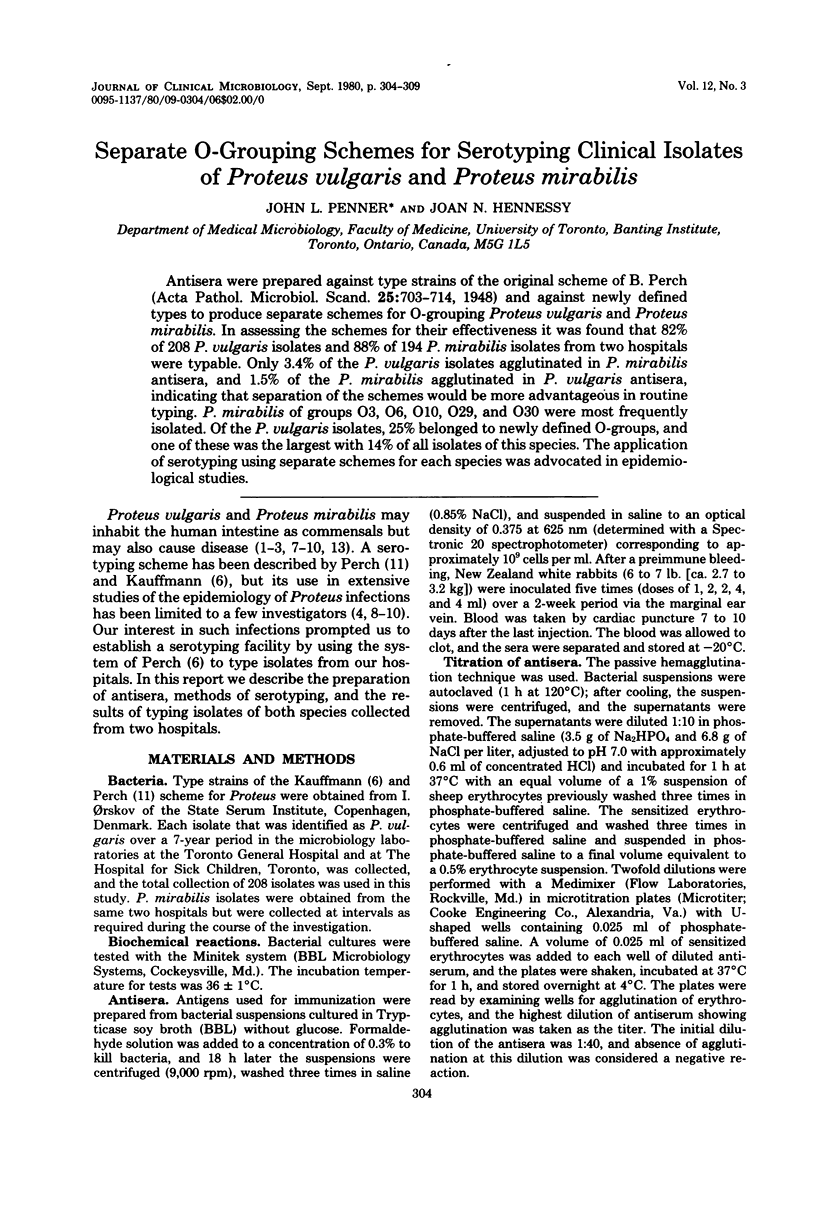
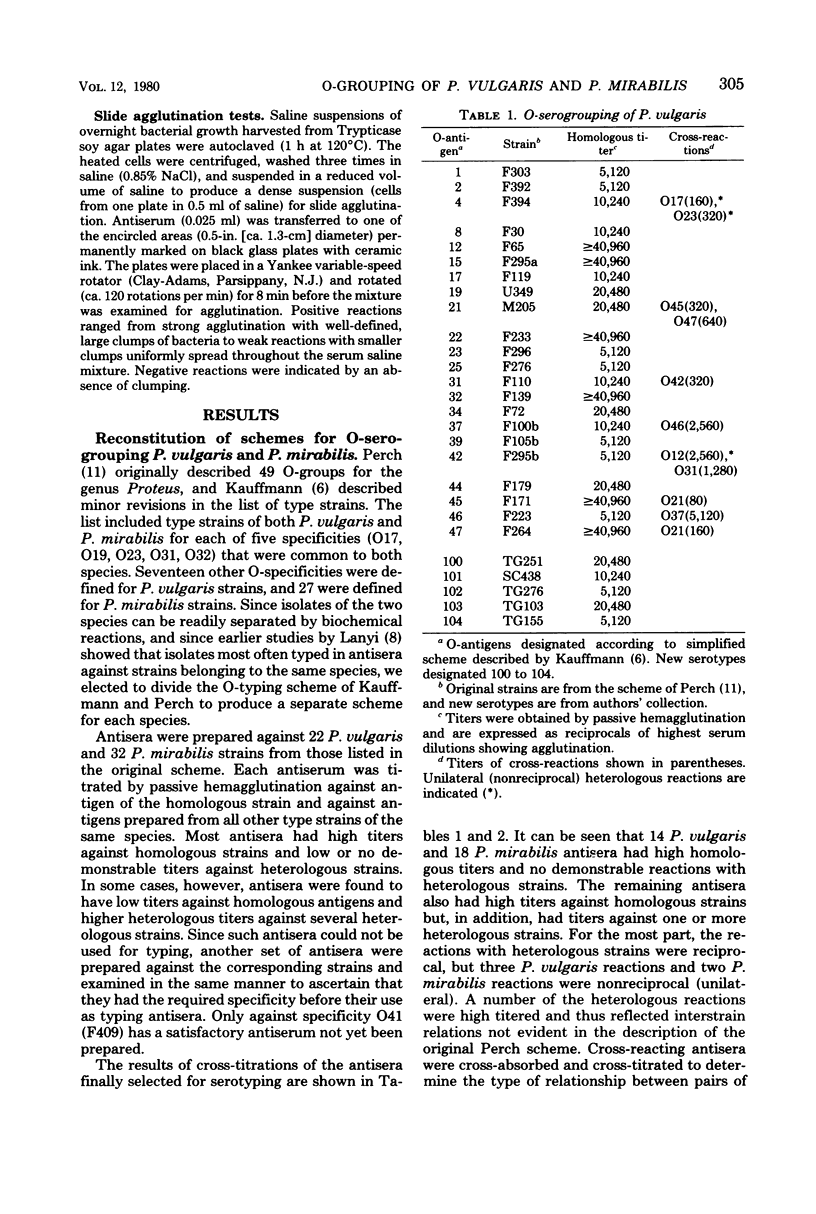
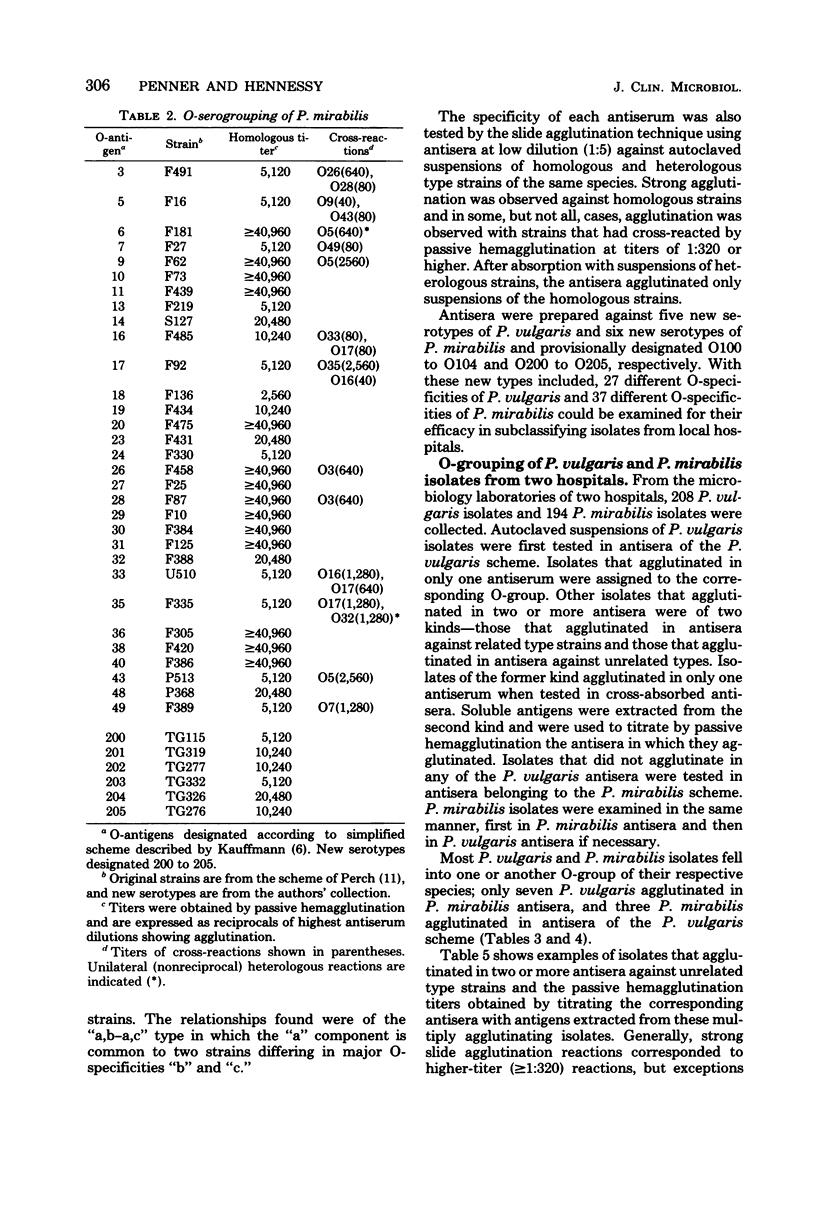
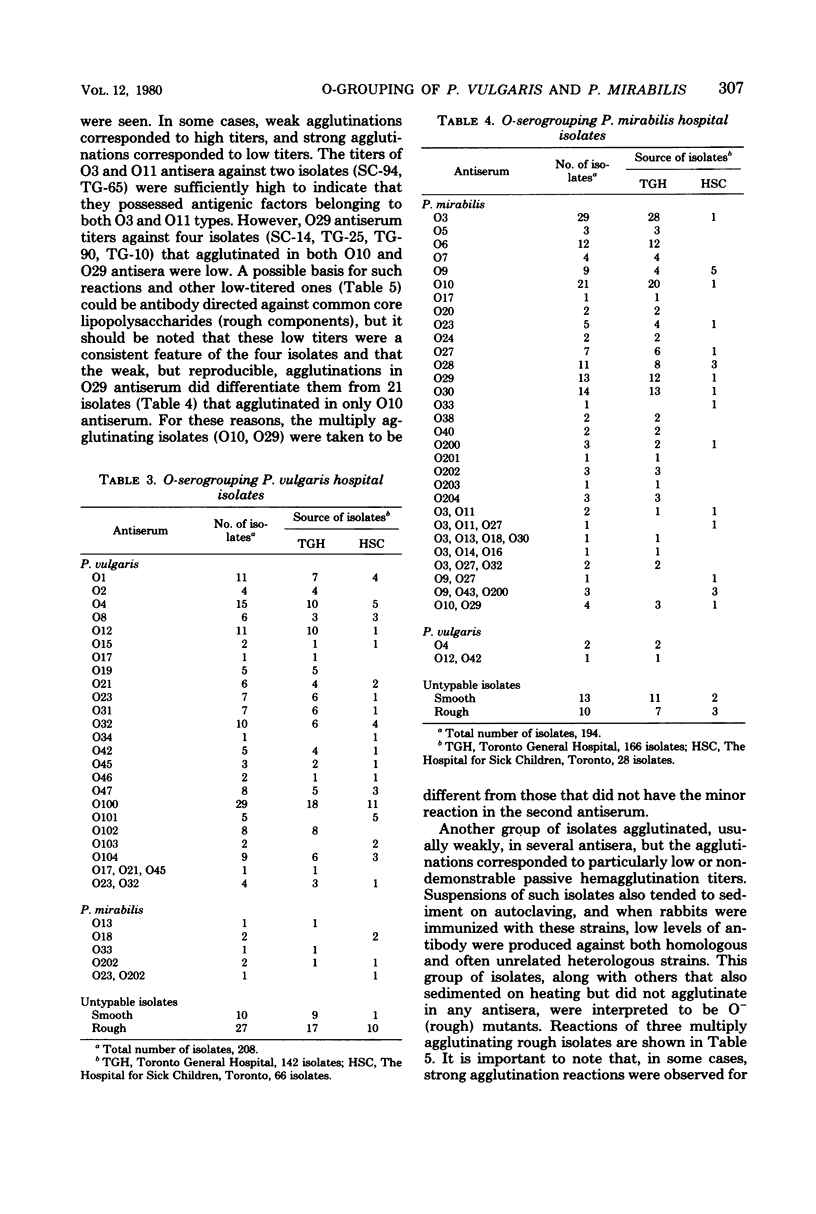
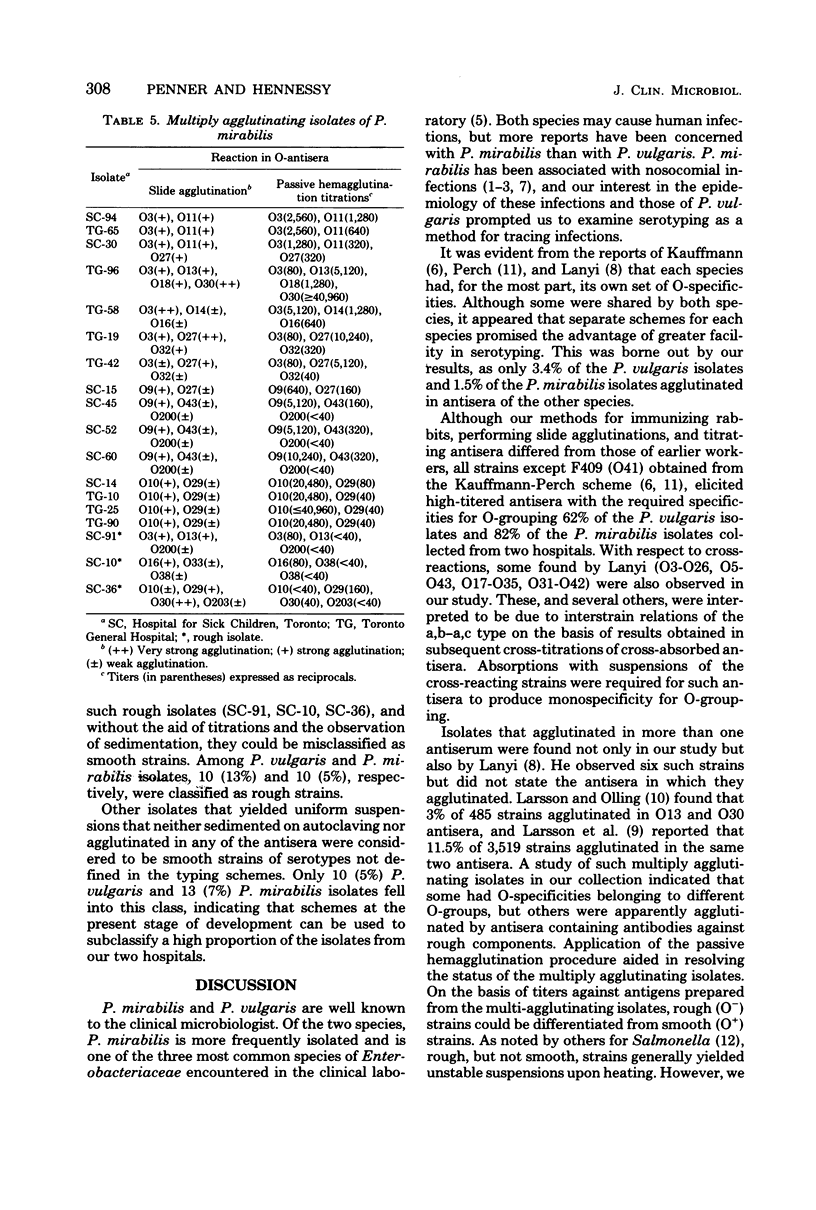
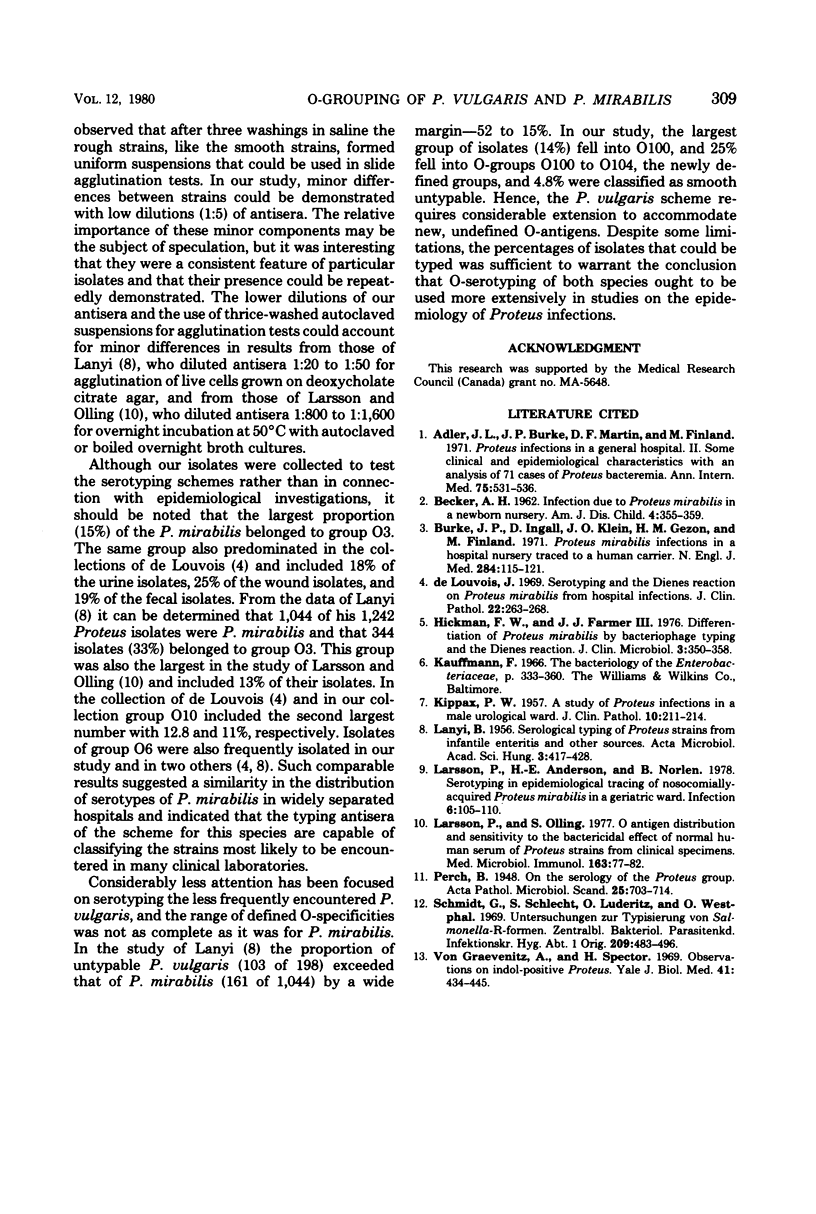
Selected References
These references are in PubMed. This may not be the complete list of references from this article.
- Adler J. L., Burke J. P., Martin D. F., Finland M. Proteus infections in a general hospital. II. Some clinical and epidemiological characteristis. With an analysis of 71 cases of proteus bacteremia. Ann Intern Med. 1971 Oct;75(4):531–536. doi: 10.7326/0003-4819-75-4-531. [DOI] [PubMed] [Google Scholar]
- BECKER A. H. Infection due to Proteus mirabilis in newborn nursery. Am J Dis Child. 1962 Oct;104:355–359. doi: 10.1001/archpedi.1962.02080030357006. [DOI] [PubMed] [Google Scholar]
- Burke J. P., Ingall D., Klein J. O., Gezon H. M., Finland M. Proteus mirabilis infections in a hospital nursery traced to a human carrier. N Engl J Med. 1971 Jan 21;284(3):115–121. doi: 10.1056/NEJM197101212840301. [DOI] [PubMed] [Google Scholar]
- De Louvois J. Serotyping and the Dienes reaction on Proteus mirabilis from hospital infections. J Clin Pathol. 1969 May;22(3):263–268. doi: 10.1136/jcp.22.3.263. [DOI] [PMC free article] [PubMed] [Google Scholar]
- Hickman F. W., Farmer J. J., 3rd Differentiation of Proteus mirabilis by bacteriophage typing and the Dienes reaction. J Clin Microbiol. 1976 Mar;3(3):350–358. doi: 10.1128/jcm.3.3.350-358.1976. [DOI] [PMC free article] [PubMed] [Google Scholar]
- KIPPAZ P. W. A study of Proteus infections in a male urological ward. J Clin Pathol. 1957 Aug;10(3):211–214. doi: 10.1136/jcp.10.3.211. [DOI] [PMC free article] [PubMed] [Google Scholar]
- LANYI B. Serological typing of Proteus strains from infantile enteritis and other sources. Acta Microbiol Acad Sci Hung. 1956;3(4):417–428. [PubMed] [Google Scholar]
- Larsson P., Andersson H. E., Norlén B. Serotyping in epidemiological tracing of nosocomially acquired Proteus mirabilis in a geriatric ward. Infection. 1978;6(3):105–110. doi: 10.1007/BF01642257. [DOI] [PubMed] [Google Scholar]
- Larsson P., Olling S. 0 antigen distribution and sensitivity to the bactericidal effect of normal human serum of Proteus strains from clinical specimens. Med Microbiol Immunol. 1977 Jul 18;163(2):77–82. doi: 10.1007/BF02121822. [DOI] [PubMed] [Google Scholar]
- Schmidt G., Schlecht S., Lüderitz O., Westphal O. Untersuchungen zur Typisierung von Salmonella-R-Formen. I. Mikrobiologische und serologische Untersuchungen an Salmonella minnesota-Mutanten. Zentralbl Bakteriol Orig. 1969;209(4):483–496. [PubMed] [Google Scholar]
- Von Graevenitz A., Spector H. Observations on indol-positive Proteus. Yale J Biol Med. 1969 Jun;41(6):434–445. [PMC free article] [PubMed] [Google Scholar]


